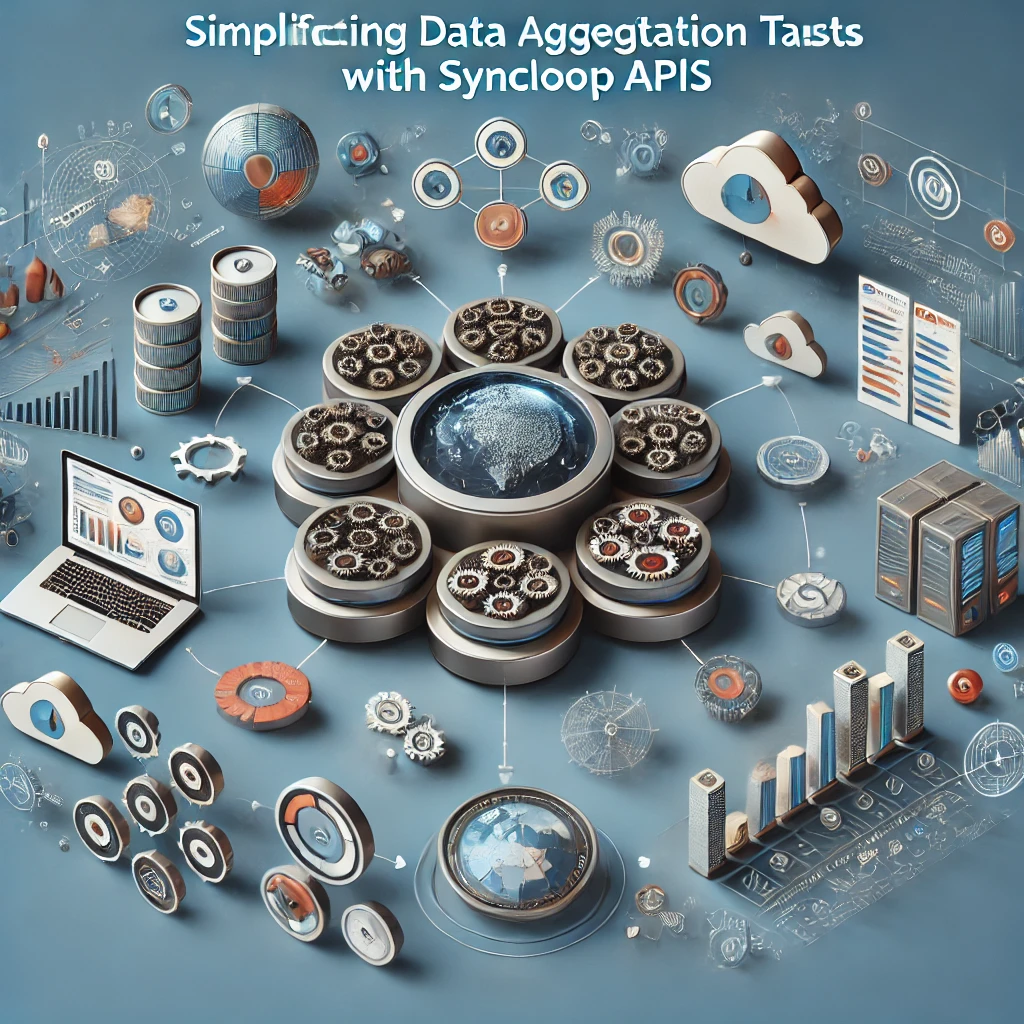Simplifying Data Aggregation Tasks with Syncloop APIs

Importance of Data Aggregation in APIs
Data aggregation is essential for:
- Centralized Insights: Combine data from multiple sources into a single, comprehensive view.
- Improved Decision-Making: Enable real-time analytics and actionable insights.
- Enhanced User Experience: Deliver tailored content and dynamic updates by aggregating user-specific data.
- System Synchronization: Ensure consistency across platforms by integrating diverse data streams.
Syncloop provides the tools to build scalable and efficient data aggregation workflows, making these processes seamless.
Key Features of Syncloop for Data Aggregation
1. Workflow Automation
Automate multi-step aggregation processes with Syncloop’s visual workflow designer, reducing manual intervention.
2. Data Transformation
Transform incoming data into standardized formats using Transformers, ensuring compatibility with aggregation systems.
3. Real-Time Processing
Process and aggregate data as it arrives, supporting real-time updates and analytics.
4. Scalable Infrastructure
Handle large volumes of data efficiently with Syncloop’s scalable API gateways.
5. Error Handling
Recover from failures with retry mechanisms and fallback workflows to maintain data consistency.
6. Monitoring and Analytics
Track performance and identify bottlenecks in data aggregation processes using real-time monitoring tools.
Steps to Simplify Data Aggregation with Syncloop
Step 1: Identify Data Sources
Determine the sources that need to be aggregated, such as:
- Databases (SQL, NoSQL).
- Third-party APIs.
- IoT devices.
- Files or streams.
Step 2: Configure Endpoints
Create Syncloop endpoints to collect data from these sources. Define authentication and data retrieval rules for each source.
Step 3: Design Aggregation Workflows
- Use Syncloop’s workflow designer to:
- Fetch data from multiple sources.
- Apply transformations to normalize or enrich the data.
- Combine datasets into a unified format.
- Use conditional logic (Ifelse controls) to handle source-specific scenarios.
Step 4: Enable Real-Time Processing
- Use Syncloop’s event-driven architecture to:
- Trigger workflows when new data is available.
- Push aggregated results to downstream systems or dashboards.
Step 5: Monitor and Optimize
- Track workflow execution using real-time monitoring tools.
- Analyze metrics like processing times, error rates, and throughput to identify areas for optimization.
Step 6: Implement Error Recovery
- Use retry mechanisms to recover from temporary failures during data retrieval or processing.
- Configure fallback workflows to handle errors gracefully, such as storing incomplete data for later reprocessing.
Real-World Applications
1. Business Dashboards
- Use Case: Aggregate sales, inventory, and marketing data into a unified dashboard for decision-making.
- Features Used: Workflow automation, real-time processing, data transformation.
2. IoT Monitoring Systems
- Use Case: Collect and aggregate sensor data for real-time monitoring and alerts.
- Features Used: Event-driven workflows, scalable infrastructure, error handling.
3. Healthcare Analytics
- Use Case: Combine patient records, diagnostics, and treatment histories into a centralized analytics platform.
- Features Used: Data standardization, secure API endpoints, monitoring tools.
4. Financial Services
- Use Case: Aggregate transaction data from multiple systems to detect patterns and generate reports.
- Features Used: Conditional workflows, real-time analytics, error recovery.
Best Practices for Data Aggregation with Syncloop
- Normalize Data Early: Use Transformers to standardize formats at the source, simplifying downstream processing.
- Optimize Workflows: Minimize complexity by breaking aggregation tasks into smaller, reusable modules.
- Leverage Real-Time Monitoring: Continuously track performance to ensure smooth operation and resolve issues quickly.
- Secure Data Transfers: Use encryption and authentication for all API communications.
- Document Processes: Maintain detailed documentation of workflows and data structures to support troubleshooting and updates.
Why Choose Syncloop for Data Aggregation?
Syncloop provides an intuitive platform for building and managing data aggregation APIs, offering powerful tools for automation, transformation, and monitoring. Its scalable infrastructure and robust error-handling capabilities make it an ideal solution for complex aggregation tasks.
Conclusion
Data aggregation is essential for driving insights and maintaining system synchronization. Syncloop simplifies the process with its advanced API management tools, enabling developers to create efficient, scalable, and reliable workflows. By leveraging Syncloop’s features, you can streamline aggregation tasks and deliver better outcomes for your applications.
Back to Blogs